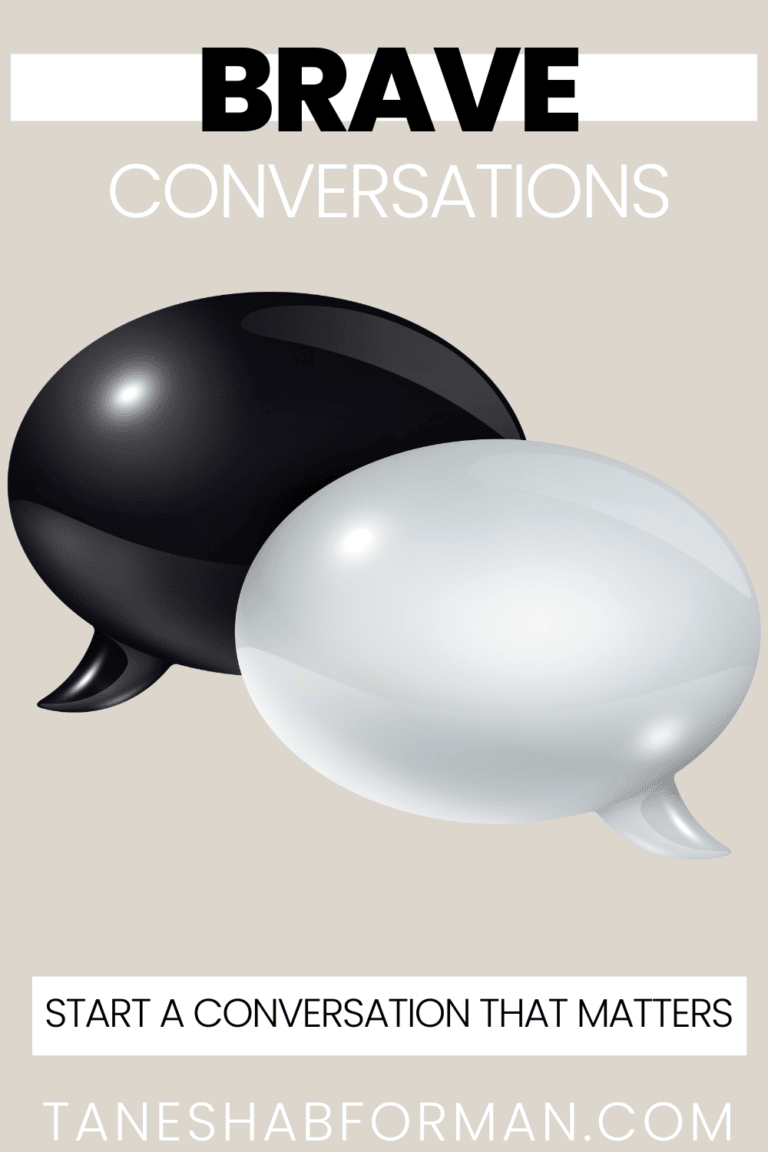
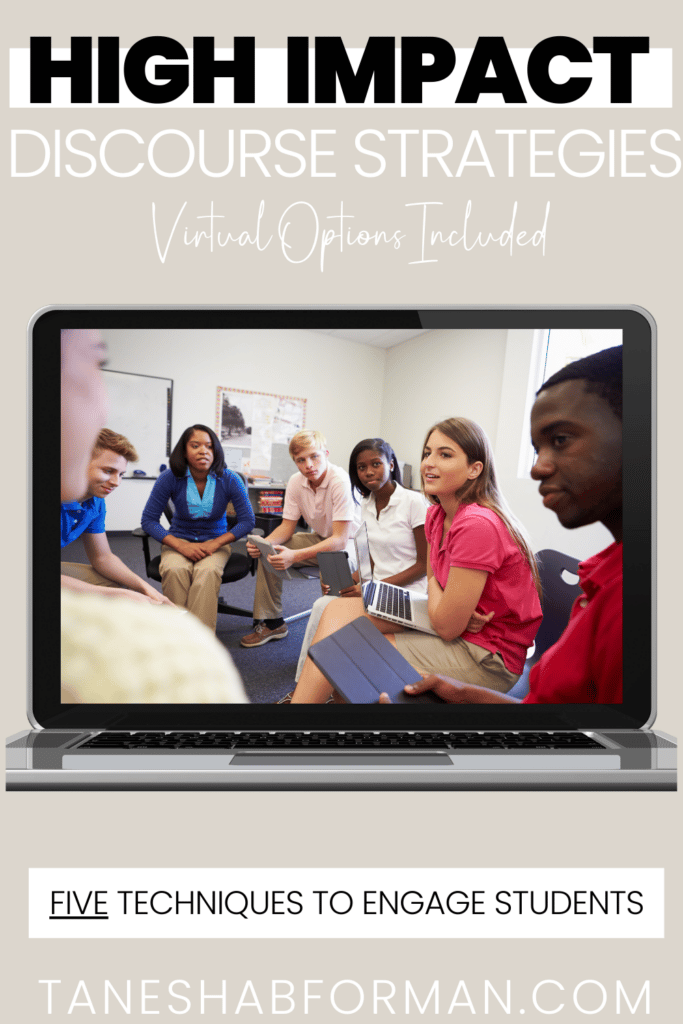
5 High Impact Discourse Strategies
The key to maintaining classroom discourse involves having multiple strategies to engage students in the process. The goal is to invite as many students and ideas into the conversation as possible. If you are just getting started, consider these habits to create a strong foundation.
DiscussioN Strategies
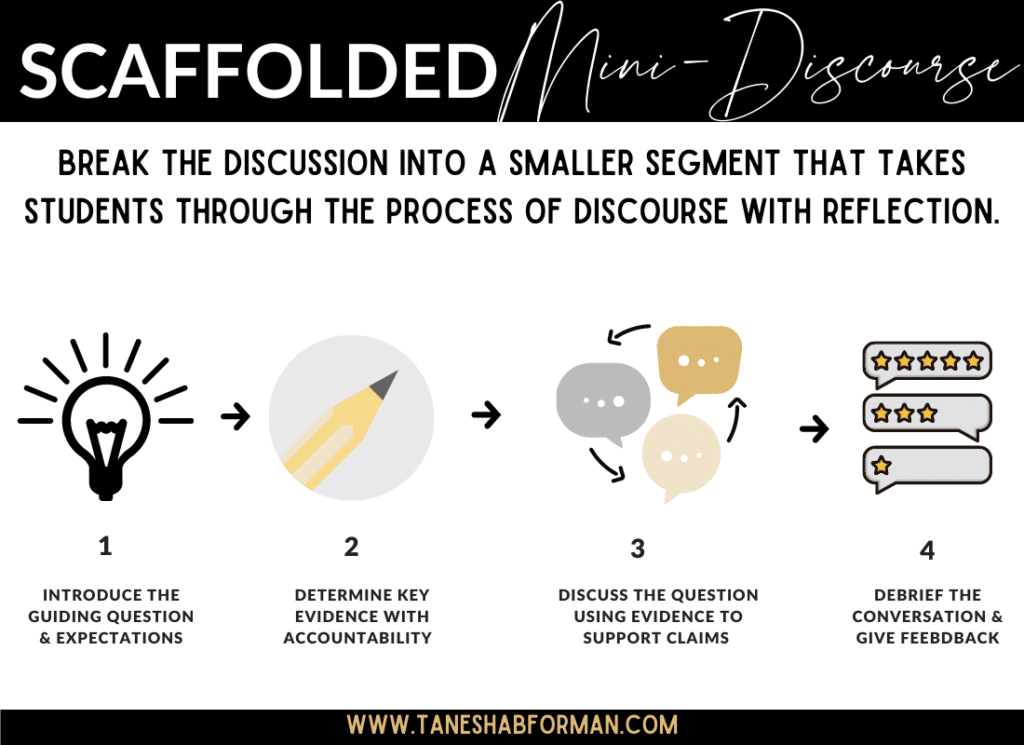
Stop me if you’ve been here before- You put tons of energy and effort into lesson planning for a dynamic conversation. Start off with a great discourse question, give students time to prepare, and… crickets. I’ve been there, and when I realized that being frustrated with my student’s lack of engagement wasn’t getting anywhere, it hit me that I needed to change the way I frame these discussions.
Focusing on small discourse goals prevents common pitfalls during class discussions, and allows students to build their discourse muscles. Layer the discussion with discourse goals and then engage for shortened amount of time.
example
(1 min) Introduce the question, set expectations, name the goal
(2 mins)Determine evidence w/accountability (e.g. collab board, chat, Google question)
(5 mins) Discussion use cold/warm calling to invite students to share
(1 min) Debrief for students “How did you revise your thinking based on the conversation?”
(1 min) Feedback for the class
Key Considerations:
- Getting stuck with one student → Pause the discussion and do an “Everybody Writes” or “Turn and Talk”
- The amount of discussion → Four to five minutes isn’t enough time for a robust conversation. Continue to increase the time once skill grows.
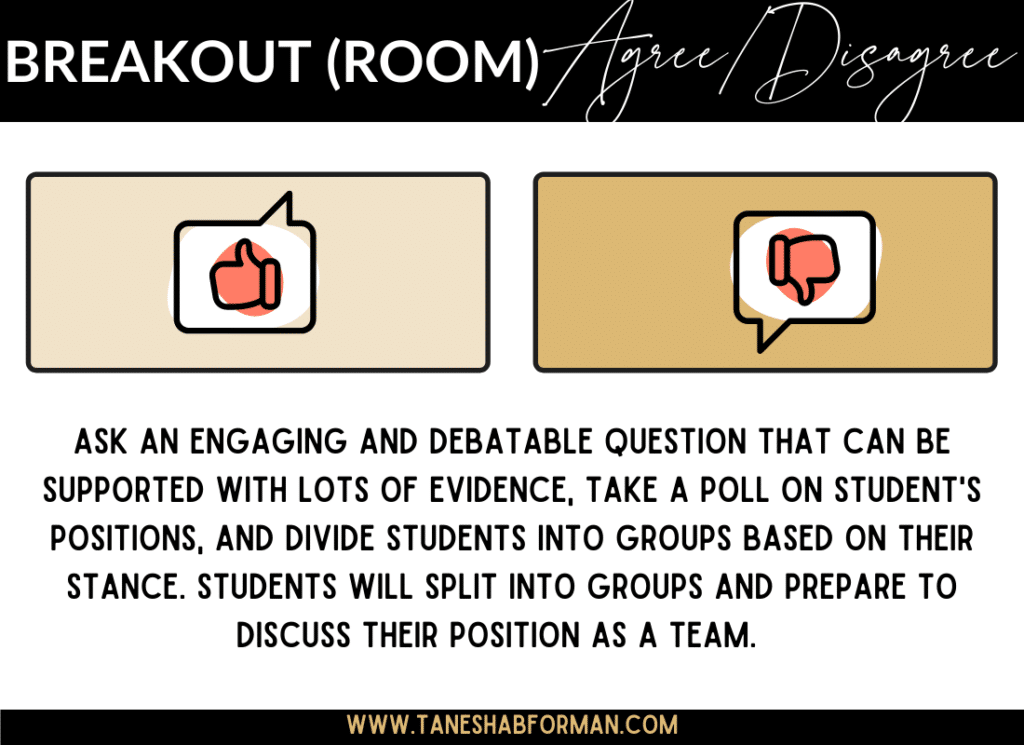
Breakout rooms and small groups are great opportunities for students to collaborate and create community. It’s also a strategy that aligns with the development of secondary learners. They love chatting. Am I right?
To try this strategy, ask an engaging and debatable question that can be supported with lots of evidence. Either allow students to self-select, or be placed in a group. Next, divide the class into teams based on their position, and have them prepare for the discussion together. Once students are passionate and prepared to defend a position, move to the whole group discussion. Encourage students to listen and respond to the opposing view.
Virtual Considerations: Leverage breakout or hangout rooms as spaces to prepare for the discourse. Make sure students are clear in their position and hold time to discuss their evidence and counterarguments.
Implementation Considerations: Breakout rooms can be tricky depending on the dynamics of your students. Be aware of student groupings and announce the value of hearing everyone’s opinion and coming to the conversation prepared to discuss and listen.
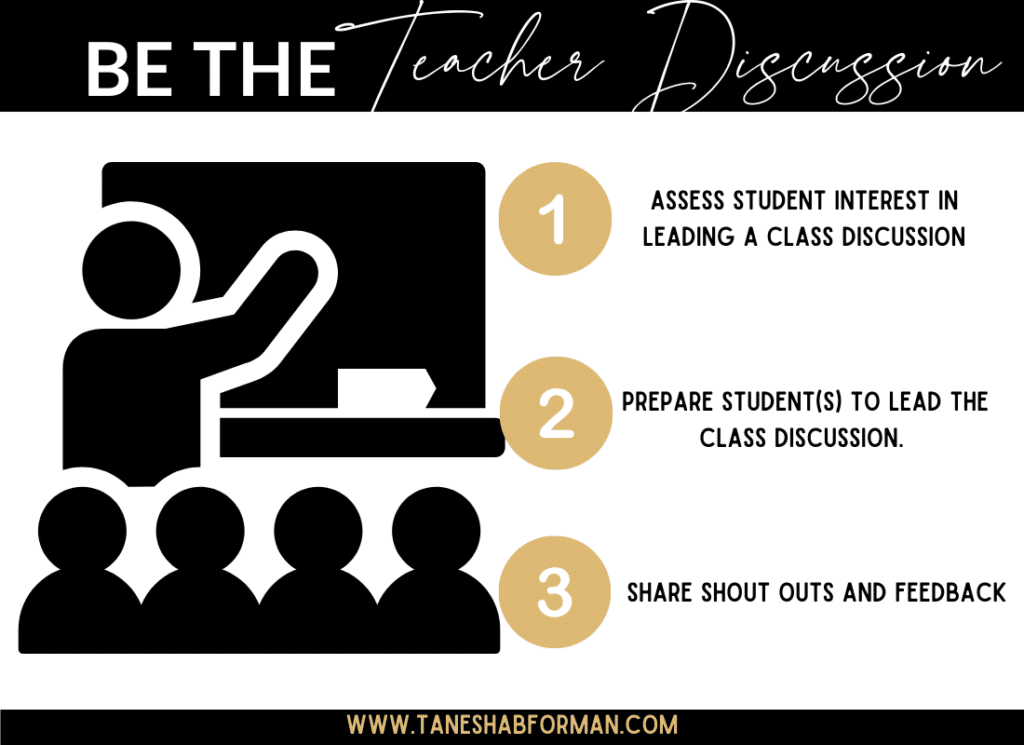
Research indicates that students learn from engaging with their peers and develop organizing, planning, cooperative learning, and feedback skills with peer accountability. Invite students to facilitate the conversation! Pre-select student(s) to lead the conversation and prepare them with questions to keep the conversation moving forward, and the key ideas.
Virtual Considerations: Nothing changes too much with the virtual execution of this strategy.
Implementation Considerations: Take time to prepare students to facilitate the conversation and give tips on how to ask probing questions and invite students into the conversation.
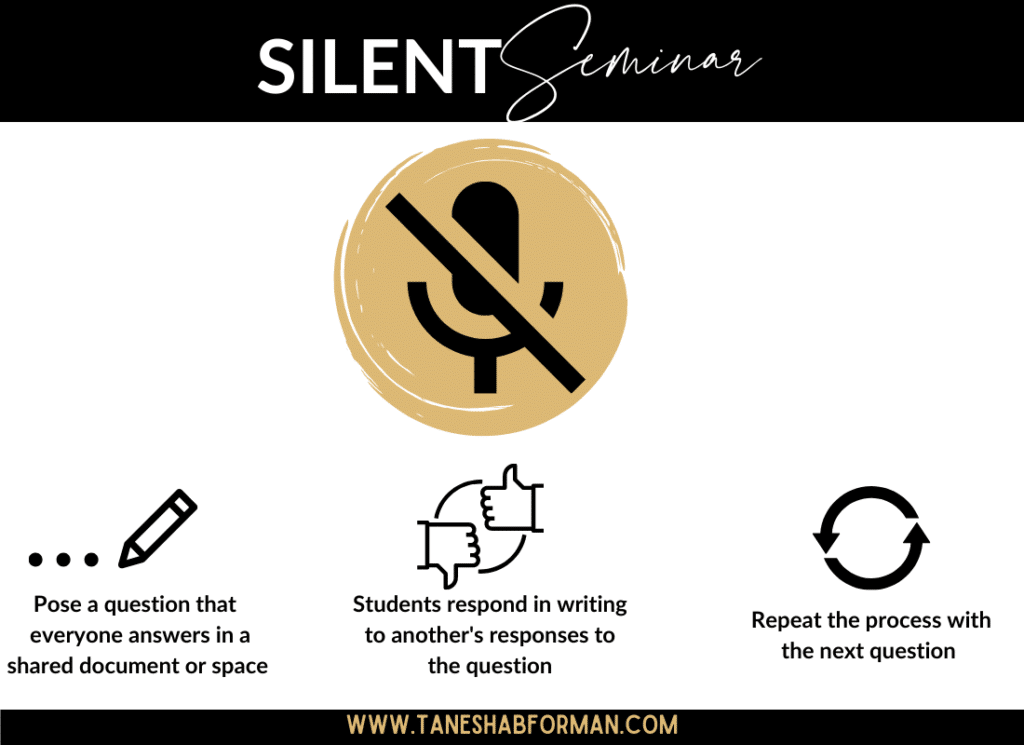
A “Silent Seminar” is a discussion technique that engages students in responding to one another. It starts with a way (e.g. Google question, collaborative board, ect.) for students to share their ideas to the class and for students to respond each other. Classrooms that I support use a Google Excel (#keepitsimple) sheet. Each student has a row to share their response to a question, with the remaining columns filled black. After giving students time to write their response in their row, reveal the next columns by resetting the filling and assigning each student a peer to respond to.
Virtual Considerations: No change! This is designed with virtual in mind. That said, in a live classroom, teachers can create stations around the room for students to rotate between. Students will have two responsibilities at each station. The first is to answer the question, and the second is to leave a reply to a peer.
Implementation Considerations: There is a bit of setup with directions that students will need to understand to engage in the lesson. This is a great strategy to have everyone share their ideas, but silence with older students can be tough. Infuse strategies that breakup the silence (e.g. a quick debrief) or build on the silence (e.g. raise your hand/hit your participant button if you found a good counterargument.
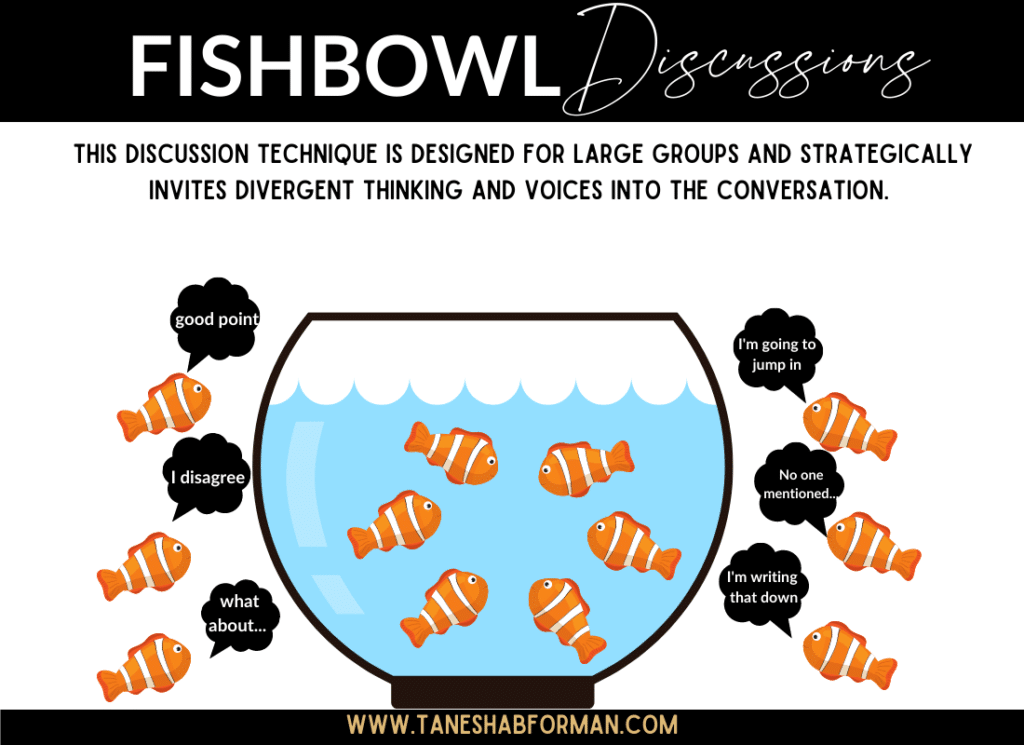
This discussion technique is specifically designed for large groups to invite divergent thinking and voices into the conversation. The beauty here is the audience members are (or will become) participants. In the fishbowl discussion, chairs are rearranged to include inner and outer circles with students in the inner circle discussing and students in the outer circle taking notes – preparing to join the inner circle. There’s always an open inner circle seat so that participants can tap into the conversation at will. The benefits of a fishbowl are that it promotes active listening—and invites various perspectives on the topic at hand.
Virtual Considerations: Start with the inner circle and leave a “seat” for students to join the conversation. Students can use the participant controls, or chat to indicate they want to join or leave the conversation. The teacher/moderator will keep the class updated on who is in the inner circle and monitor the time. Additionally, use the polling/conference features to keep everyone in the conversation.
Implementation Considerations: Teachers will need to ensure that roles for the inner and outer circles are clear with accountability measures. This could mean collecting student notes, posing questions during the discussion, inviting all students to respond to one question in writing, and/or completing a reflection at the end of the discussion.
Reflection
Strong discourse habits is an area I am working to cultivate and learn more about. What techniques and tips do you have? Please share in the comments.

PIN FOR LATER!
JOIN THE COLLECTIVE
Sign up and access the FREE resources to support your Anti-Bias/Anti-Racism journey.

Tanesha B. Forman
I'm a current middle school administrator who loves breaking down complex topics and providing opportunities for educators learn, reflect, practice, and implement methods that foster equity and anti-racism. I believe we win together!
Behind the Blog


Hi, I'm Tanesha.
I’m a current middle school administrator who loves breaking down complex topics and providing opportunities for educators learn, reflect, practice, and implement methods that foster equity and anti-racism. I believe we win together!






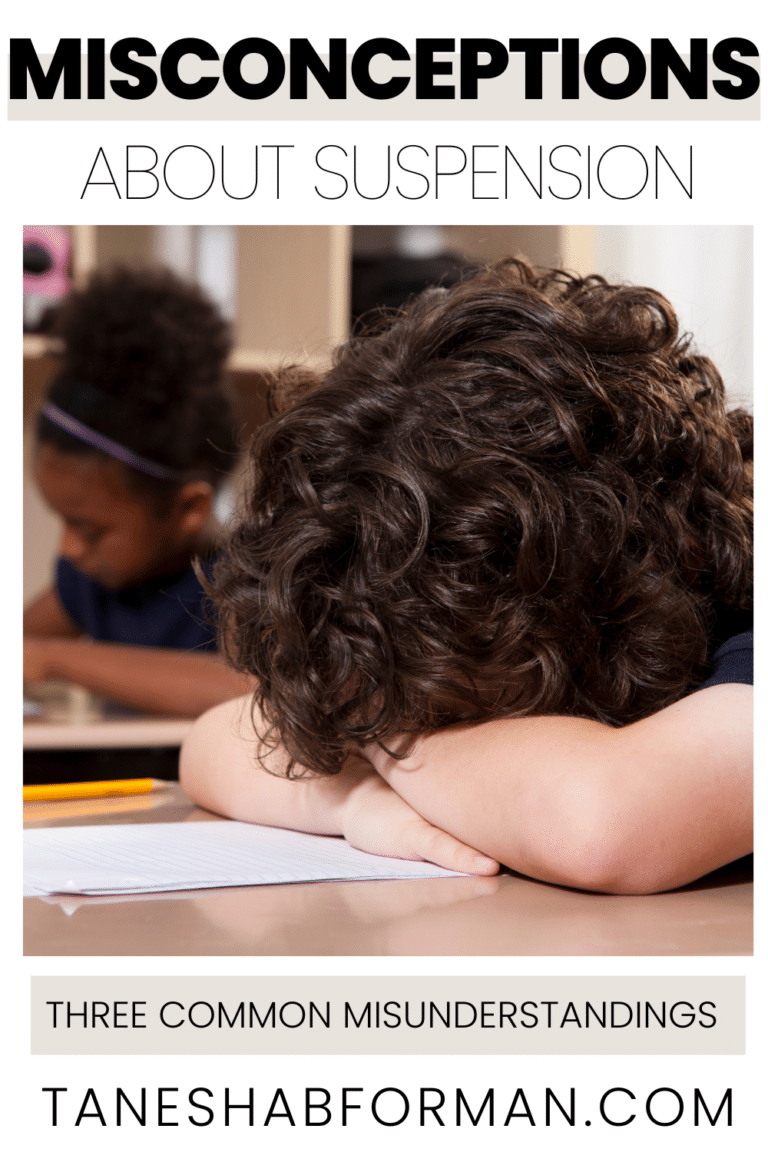


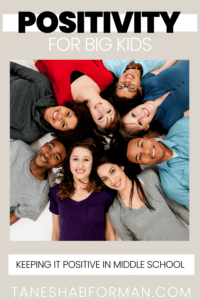
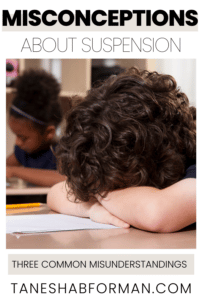

1 thought on “5 High Impact Discourse Strategies”
Do you do in person Professional Development for teachers